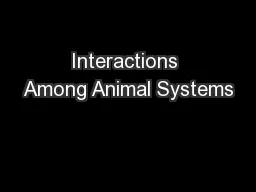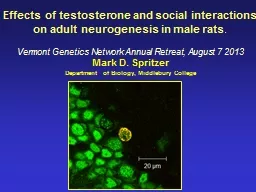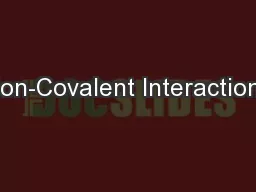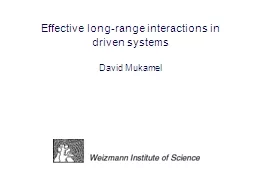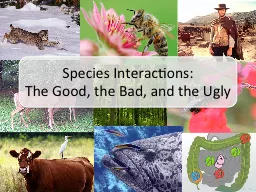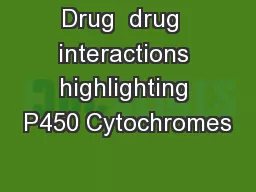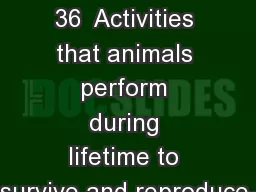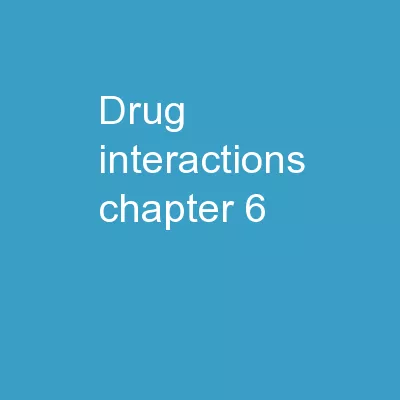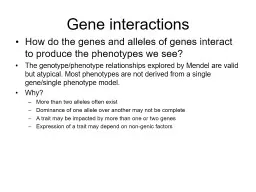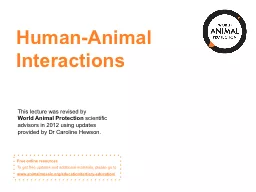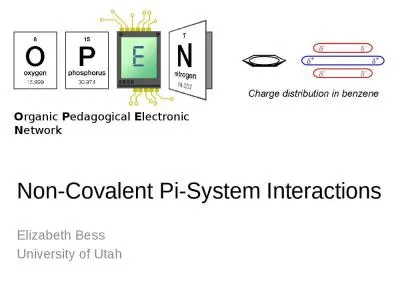PPT-Interactions Among Animal Systems
Author : tatyana-admore | Published Date : 2017-10-05
Part One Biology 10A Learning Objectives Identify major organ systems in animals Describe the interactions that occur among systems to carry out vital animal functions
Presentation Embed Code
Download Presentation
Download Presentation The PPT/PDF document "Interactions Among Animal Systems" is the property of its rightful owner. Permission is granted to download and print the materials on this website for personal, non-commercial use only, and to display it on your personal computer provided you do not modify the materials and that you retain all copyright notices contained in the materials. By downloading content from our website, you accept the terms of this agreement.
Interactions Among Animal Systems: Transcript
Download Rules Of Document
"Interactions Among Animal Systems"The content belongs to its owner. You may download and print it for personal use, without modification, and keep all copyright notices. By downloading, you agree to these terms.
Related Documents

